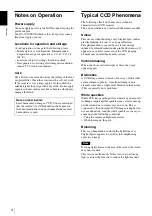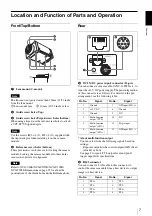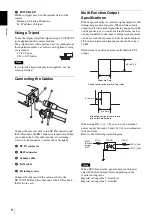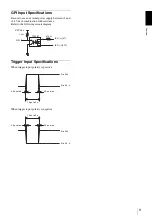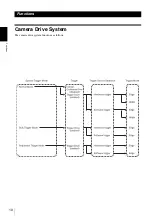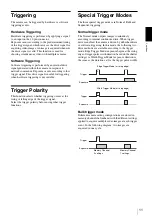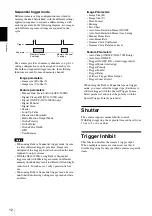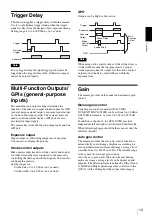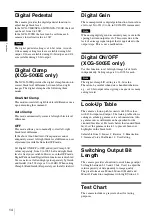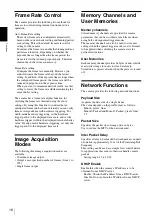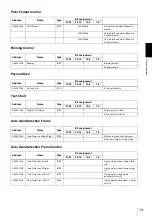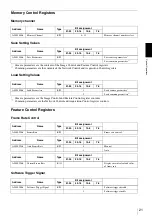
Ov
e
rvi
ew
8
g
POWER LED
Flashes or lights based on the internal status of the
camera.
Flashing: Obtaining IP address.
Lit: IP address obtained.
Using a Tripod
To use the tripod, install the tripod adaptor VCT-ST70I
(not supplied) on the camera module.
Use a tripod screw with a protrusion (
4
) extending from
the installation surface, as follows, and tighten it, using
a screwdriver.
4.5 to 5.5 mm
0.18 to 0.22 inches
Note
If you install a tripod adapter (not supplied), use the
screws provided.
Connecting the Cables
Connect the camera cable to the DC IN connector and
the LAN cable to the RJ45 connector respectively. When
you connect the LAN cable, turn the two fastening
screws on the connector to secure the cable tightly.
a
DC IN connector
b
RJ45 connector
c
Camera cable
d
LAN cable
e
Fastening screws
Connect the other end of the camera cable to the
DC-700/700CE and the other end of the LAN cable to
the Network card.
Multi-Function Output
Specifications
When exposure output is selected, signal output is valid
during image sensor exposure. When strobe control
output is selected, output signal timing and pulse width
can be precisely set to control external devices such as
strobes connected to the camera. Output signal polarity
can be set for both exposure and strobe control outputs.
TTL output termination impedance should be at least
10 k
Ω
.
Illustrations of positive-polarity multi-function TTL
output.
When using ISO (+ or -), be sure to use an external
power supply b5 and +24 Vdc in combination
with resistance.
Refer to the following circuit diagram.
Note
When GPO (fixed-value, general-purpose output) is
selected, the fixed output varies depending on the
register setting value.
Register setting value 0: fixed Low
Register setting value 1: fixed Hi
Exposure Time
Strobe control pulse width setting (time)
Strobe control signal rise time and
pulse width are settable
4.8 to 5.2 V
0 to 4 ms
0 to 4 ms
Multi-
function
output
3.3 V
TLP281
220
Ω
ISO (+) [#6]
ISO (–) [#5]
470
Ω




